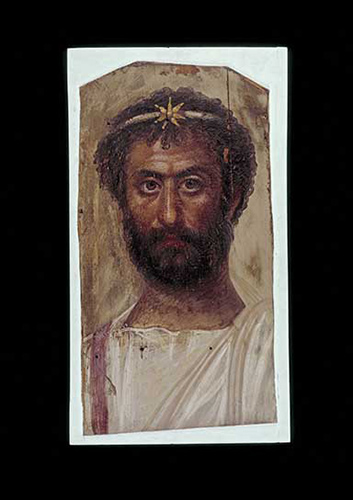Part of the lasting legacy of the Hellenistic period (circa 323–31 BCE) was the birth of the cosmopolitan. or “world citizen.” Alexander the Great’s unification of the Mediterranean world initiated a culturally diverse period of intermittent tension and peaceful coexistence among Romans, Greeks, Egyptians, Persians, and more.
After 30 BCE, the Roman Empire ascended and expanded her borders, incorporating a nearly infinite range of cultures, peoples, and religions. On view now at the British Museum, London is an amazing exhibition that details the evolution of Egyptian art after the death of Cleopatra and Mark Antony in 30 BCE until 1171 CE, when the Islamic Fatimid dynasty collapsed. “Egypt: Faith After the Pharaohs” spans over 12 centuries and highlights the ways that Jews, Christians, and Muslims transformed the Nile region. As the museum states, “It is a story charting the change from a world of many gods to the worship of one God. The state’s use of religion to assert power is shown by fabulous sculptures that mix ancient Egyptian and Roman imperial iconography, and letters on papyrus concerning the treatment of Jews and early Christians. Gravestones and architectural elements demonstrate the reuse and reworking of sacred spaces — temple complexes were reused as churches and, later, mosques.

Bowl with the image of a priest, ca. 1050-1100 CE, ceramic, (c) Victoria & Albert Museum 2015
“The changes in people’s private lives are shown through everyday objects — delicate fragments of papyrus preserve some of the earliest surviving Jewish scriptures and lost Christian gospels. Colorful garments and accessories show what people wore, and soft-furnishings show how they dressed their homes.

Portrait of a Priest of Serapis, ca. 140-160 CE, encaustic on wood, (c) The British Museum 2015
“Together, the objects in the exhibition show how the shift from the traditional worship of many gods to monotheism — the belief in one God — affected every part of life. Egypt’s journey from Roman to Islamic control reflects the wider transformation from the ancient to medieval world, a transition that has shaped the world we live in today.”

The Egyptian god Horus in Roman military costume, 1st-2nd century CE, limestone, (c) The British Museum 2015
“Egypt: Faith After the Pharaohs” opened on October 29 and will be on view through February 7.
To learn more, visit the British Museum.
This article was featured in Fine Art Today, a weekly e-newsletter from Fine Art Connoisseur magazine. To start receiving Fine Art Today for free, click here.







